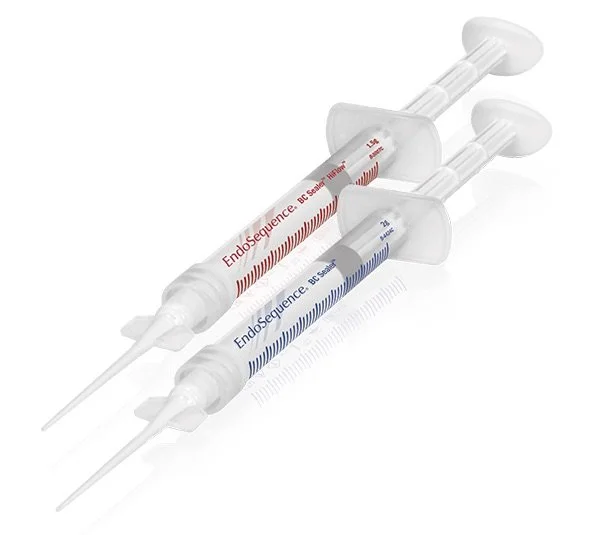Graduate:
“Microscopic Endodontic Technique”
University of Illinois, Chicago
‘Microscopic Endodontic Course
Dr Stephen Buchanan, Santa Barbara
2014 August UCLA Endodontic Continuum
Dr Enatsu was the first dentist from Asia to attend the courses by the world renown endodontist (Dr Stephen Buchanan) who introduced the NiTi files to dentistry and the Microscopic Endodontic Techniques course together with the graduate students at UIC, Endodontic Department.
In our clinic, together with our skills to give adequate pain control, we can provide the most up to date root canal treatment in comfort.
Are all Root Canal Treatments the Same?
Root canal treatment involves cleaning out the necrotic and diseased nerve tissues in the root canal system(it is composed of main branches and small accessory branches) and filling the canals.In our clinic, together with our skills to give adequate pain control, we can provide the most up to date root canal treatment in comfort.
The saving of useful teeth is worth of our best service. It is strongly advisable to have the initial root canal treatment done as best as it can be as the retreatment decreases success rate, is costly and time consuming. General level of root canal treatment in Japan is not as up to date as what you can receive at our clinic. Our doctor has adequate training to provide the standard of treatment similar to endodontist in US. Dr Enatsu is the first dentist from Asia to attend Dr Buchanan’s course on Microscopic Endodontics in 1999 and had the training at the University of Illinois, Endodontic Department.
Patient receives adequate anesthesia so there will be NO PAIN during the procedures. We have patients coming to our clinic, due to inability to get profound pain control during the procedure at other dental clinic. Root Canal Treatment is completed in one or two appointments. We do provide medication to control post-operative pain.
The Armamentarium for Standard of Care for Root Canal in our Office is Composed of:
-

1. Surgical Microscope
→able to see inside the tooth and canals
-

2. BioCeramics
→biocompatible, longer lasting treatment
-

3. Negative Pressure Irrigation System
→make the medicine to reach everywhere safely
-

4. Rubber Dam
→Isolate the tooth for efficient work and also controls infection
About Root Canal Treatment
1. What is Root Canal Treatment?
The canal where the nerve of the root resides is called the root canal. Root Canal Treatment (RCT) means treating this canal.
- Vital Nerve RCT: The nerve is still vital; the nerve is removed during RCT.
- Infected Canal RCT: The nerve is already dead.
- Retreatment: RCT is already done, but retreatment is necessary.
When bacterial infection in the root canal is removed, the root canal problem is usually solved. However, sometimes the treatment is complex and difficult. Research shows the success rates:
- Vital Nerve RCT: 90-95%
- Infected RCT: 80-90%
- Retreatment RCT: 50-60% (Survival rate may be higher)
2. Indications
- Irreversible Pulpitis: Nerve inflammation that does not improve, even after treatments like caries removal and fillings.
- Periapical Periodontitis: Bacterial contamination in the root causing inflammation around the root apex.
3. Contraindications
- Fractured root
- Severe periodontitis (gum disease)
- Gross decay
- Other reasons determined by the dentist
4. Root Fracture
The root of the tooth can be fractured. Sometimes, the fracture is only discovered after starting root canal treatment. If the root is fractured, tooth extraction is indicated.
5. Dental CT
Dental CT may be necessary to determine the shape of the root and/or canal. This provides more information during root canal treatment.
6. Facts on Root Canal Treatment Procedures
- Local anesthesia will be administered as necessary.
- A rubber dam will be placed to isolate the tooth.
- A surgical microscope will examine the canal at 10-25x magnification.
- Sodium hypochlorite will be used to clean the canal.
- Negative vacuum procedures will minimize leakage during treatment.
7. Post-Treatment Care
- Pain: May increase temporarily but is manageable with pain pills. Rarely, severe pain occurs.
- Swelling: May occur, including on the face, but resolves within 0.1% of cases.
- Internal Bleeding: Rarely around the eye, cheek, or jaw, disappearing gradually within two weeks to a month.
8. Follow-Up
X-rays will be taken during routine check-ups and cleanings to monitor progress.
Root Canal treatment is needed when the nerve is inflamed or undergoing irreversible damage/infection. Few factors help us determine if the tooth needs root canal treatment.
color change (darker tooth color, especially traumatized front tooth)
temperature sensitivity (hot/cold)
sensitivity to pressure either from biting, tapping or pushing on the suspect tooth.
x-ray exam
electric nerve test (a device that measures the nerve’s ability to react to a mild elctrical stimulus)
At least several of the above test should indicate the need for root canal treatment for us to make the recommendation. Accurate diagnosis is important because once treatment begins, you are totally committed. Once treatment begins, it must be completed, therefore; you can not change your mind.
Do I really Need a Root Canal Treatment?
Contact Us
If you are interested in coming to our clinic please fill out the form.



